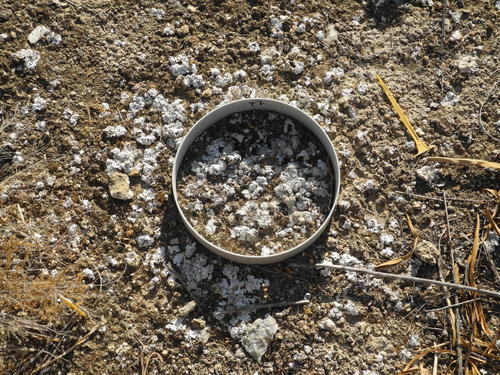Multiscale effects of biological soil crusts on dryland hydrology – a modelling framework to assess the impacts of global change
Researchers
Selina Baldauf and Britta Tietjen, in cooperation with Fernando T. Maestre
Abstract
Biological soil crusts comprise cyanobacteria, lichens, and mosses and cover a large portion of the world’s dryland surface area. They play an essential role in regulating patch- to landscape-scale hydrological and ecological processes in drylands worldwide. Through affecting soil surface properties, they can alter local hydrological patterns and those changes vitally govern surface water redistribution. Thus, biological soil crusts are important contributors to multiple ecosystem processes such as a heterogeneous vegetation pattern formation.
However, the effect on hydrological processes can vary among different crust types. Moreover, biological soil crusts are vulnerable to external disturbances, and different species might be affected differently by changes in climate or land use. The resulting shift in community composition might lead to altered ecosystem functioning, and thus to a potential increase in degradation risk of drylands under global change.
Within the framework of the Collaborative Research Centre 973: ‘Priming and Memory of Organismic Responses to Stress’, this project aims at assessing the influence of biological soil crusts on dryland hydrology on different spatial scales with a modelling approach. A special focus is put on the impacts of future environmental changes on these interactions. This allows for the assessment of long-term ecological processes and landscape development under future climate change conditions. In particular the following main objectives will be addressed:
- Enhancing the understanding of the community dynamics of biological soil crusts and their responses to increasing abiotic stress under future conditions (temperature increase, rainfall decrease).
- Developing an ecohydrological model which incorporates the community dynamics of biological soil crusts and their influence on dryland hydrology based on field data.
- Evaluating the influence of biological soil crusts on the patch- to landscape-scale hydrological and ecological processes in drylands.
- Assessing the consequences of environmental changes on landscape development and functioning in drylands.


